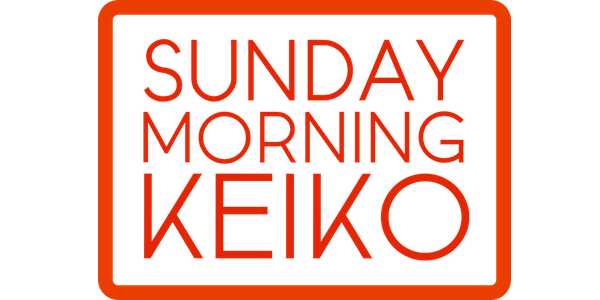by Wolf Herbert
Before we start a Kata or begin with the training of basic techniques we adjust our body and mind in a natural stance. Traditionally the command “yôi” is used to call us to attention. I vividly remember how my mentor Kanazawa Hirokazu-sôke went into the yôi position, majestically almost. It was never a half-hearted affair, but a full commitment and total presence. It is well known that Kanazawa practiced Taijiquan and therefore was well aware of the Taijiquan principles of how to align the body when standing or moving. I shall thus try to describe the important elements of a good posture in the performance of martial arts.
In fact there is a Taijiquan-stance, in which you stand erect in preparation. It corresponds to a posture called “stand strong” and can be employed for a standing meditation (ritsuzen). The renowned master Cheng Man-ch’ing describes it as follows: “Both feet should point directly ahead and your knees should be bent slightly. The distance between your feet should equal the width of your shoulders. Bend your elbows slightly outward and the backs of your wrists upward. Your fingertips are raised slightly and are relaxed, neither stretched not clenched. Your palms are down. Hold your head erect, your shoulders slumped, and your chest depressed, enabling your chi to sink to your navel. Your tongue should be held against the hard palate (roof of the mouth) and your mouth lightly closed. Without staring, look directly ahead. Your mind is at ease and concentrates calmly on your breathing.”
Cheng Man-ch’ing
Wolf Yôi!
Now here all the essentials for a proper yôi-posture are enumerated. With one difference: in Karate we do clench the fists - lightly, as I would like to suggest. Yôi is not a military call to attention where you thrust out your chest, stretch the shoulders back and thus tense up. It is quite the opposite: “lower the chest, raise the back and sink the shoulders, drop elbows” are two alignment principles that will allow the subtle energy Ki to flow to the tanden (lower abdomen). The “tailbone is tucked in” as one saying goes, i.e. the coccyx is slightly tilted upwards, thus the natural S-curve of the spine is flattened. Ki can then circulate more smoothly and unimpeded. While assuming the yôi stance you loosen up, exhale calmy and then breath naturally.
The head is held upright, the neck relaxed, no strength should be used, it should feel as if the crown were suspended from above. The Taijiquan classics state: “The spine should be like a necklace of pearls hanging from heaven.” Taijiquan emphasizes the vertical stance by elongating the spine.
Yôi (用意) consists of two Chinese characters of which the first means: “to use, apply, exert” and the second: “heart, feeling, thought, will, intention”. The second character 意 has again two parts, the upper one (音) signifies “sound” and the lower (心) “heart, mind”, hence literally it means “what resounds in the heart/mind”. The 意 (Jpn. reading: i, Chin.: yi) is used to describe the agent which mobilizes and directs the inner energy of 気 (Jpn. reading: ki, Chin.: chi or qi). The Taijiquan classics assert that all embodied movement begins with consciousness or intention. The mind/intention (i) leads the ki, and the ki moves the body. In yôi you summon your will (i), accumulate ki and get ready for any ensuing motion. With yôi we go into a mental state of an all-encompassing alertness, a choiceless awareness, which is manifested and supported by our bodily posture. It is a form of a brief standing meditation (ritsuzen).
We all know zazen, the sitting meditation in Zen-style. Kanazawa used to call Karate “moving Zen” (dôzen, the Japanese reading of dô is ugoku, which means “to move”). Once he said to me: “While Karate is moving Zen, Taijiquan is ‘standing Zen’ (ritsuzen)”. I did not quite understand at first. You also move in Taijiquan, I thought. The Zen in ritsuzen is used in the original meaning, which derives from the Sanskrit term dhyana = meditation. It is a Daoist practice and meditation is an integral part of the Chinese martial arts. Hence in good Taijiquan practice, you do still meditation to calm and strengthen your mind so that it can lead the Ki strongly and steadily. The basic exercise in ritsuzen is called zhan zhuang in Chinese (站樁, Jpn. reading: tantô). It is usually translated as “post-standing, pile-standing, standing like a tree”. You stand in a sort of shizentai (which adequately translates as “natural stance“), feet slightly apart and the arms hanging down naturally at the sides. The spine is straight, the crown of the head pushed up. One way to perform ritzuzen is to hold your hands in a relaxed manner in front of your chest as if you would hug a tree. Coordinated with breathing it calibrates your Ki and prepares you for moving, i.e. exercising Qigong or Taijiquan. The movements are then an extension of ritsuzen.
The Daoist masters have perfected the posture which defines us as humans: standing on two feet. They experimented with it to find out the most natural, effortless way to stand. With the spine erect, tailbone tucked in, head high up, feet rooted and the body centred in the tanden/hara it turned out that the Ki flux found its perfect equilibrium. In this very posture you perform Taijiquan, thus you are moving while “standing”, hence doing ritsuzen! And if we perform yôi with all the alignments described above we also do ritsuzen! And your bearing will be a majestic one too!


